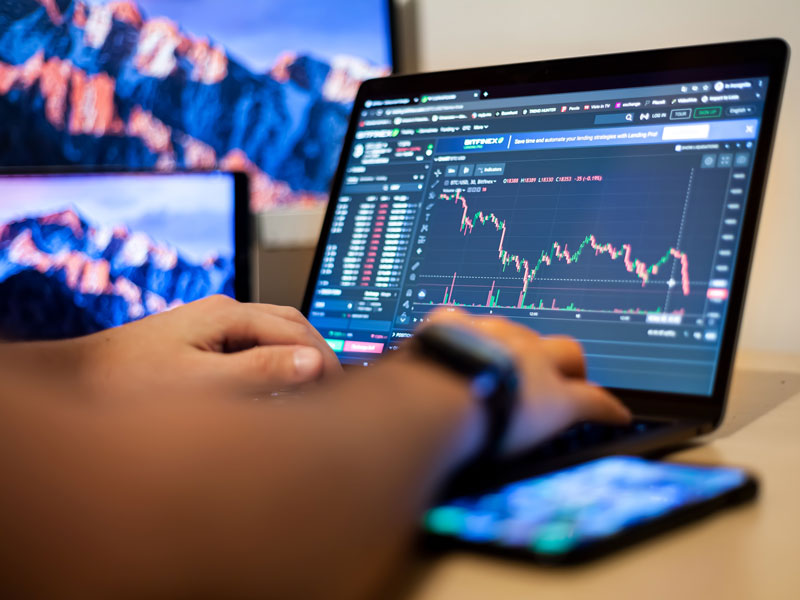
Mastering Forex Trading: A Comprehensive Guide for Beginners
If you’re looking to dive into the exciting world of forex trading, you’re in the right place. This comprehensive guide will help you understand the fundamentals of trading foreign currencies and equip you with the necessary skills to start your trading journey. For an exceptional trading experience, you can check out learn forex trading Trading Broker ZA, which offers various tools and support for both new and experienced traders.
What is Forex Trading?
Forex trading, also known as foreign exchange trading, involves buying and selling currencies on the foreign exchange market with the intent of making a profit. The forex market is the largest and most liquid financial market globally, with a daily trading volume exceeding $6 trillion. Unlike the stock market, forex trading doesn’t take place on a centralized exchange; instead, it operates over-the-counter (OTC), meaning transactions occur directly between parties, often via online platforms.
Understanding Currency Pairs
In forex trading, currencies are exchanged in pairs. A currency pair consists of two currencies: the base currency and the quote currency. The base currency is the first currency in the pair and is the currency you are buying or selling. The quote currency, the second currency in the pair, represents how much of the quote currency you need to spend to purchase one unit of the base currency. For example, the EUR/USD currency pair indicates how many U.S. dollars (the quote currency) are needed to buy one euro (the base currency).
Why Trade Forex?
There are several reasons why traders engage in forex trading, including:
- Liquidity: The forex market is highly liquid, allowing traders to enter and exit positions with ease.
- 24-Hour Market: Unlike stock markets, which have specific opening and closing times, the forex market is open 24 hours a day during weekdays, providing flexibility for traders.
- Leverage: Many forex brokers offer leverage, allowing traders to control larger positions with a smaller amount of capital.
- Diverse Trading Options: Traders can choose from a wide range of currency pairs, enabling them to diversify their trading strategies.
Getting Started with Forex Trading
If you’re serious about learning forex trading, here are the essential steps to get you started:
1. Educate Yourself
Before you begin trading, it’s crucial to educate yourself on the basics of forex trading. There are numerous online resources, courses, and books available to help you understand market dynamics, analysis techniques, and trading strategies.
2. Choose a Trading Broker
Selecting a reliable trading broker is one of the most critical decisions you’ll make as a forex trader. Look for a broker that offers a user-friendly platform, competitive spreads, comprehensive educational resources, and customer support. It’s essential to choose a broker that meets your trading needs and complies with regulatory standards.
3. Open a Trading Account
After selecting a broker, you’ll need to open a trading account. Brokers typically offer different types of accounts, including demo accounts which allow you to practice trading without risking real money. Start with a demo account to familiarize yourself with the trading platform and develop your strategies.
4. Develop a Trading Plan
A well-defined trading plan is vital for your success as a forex trader. Your trading plan should include your trading goals, risk tolerance, strategies, and evaluation methods. Consistency is key in forex trading; having a plan helps you remain disciplined and focused.
5. Practice Risk Management
Risk management should be a top priority. It’s essential to protect your trading capital and manage your risks wisely. Use stop-loss orders to limit potential losses, and never risk more than you can afford to lose on a single trade. A good rule of thumb is to risk only 1-2% of your trading capital on any given trade.

Key Trading Strategies
As you learn forex trading, you’ll encounter various trading strategies. Here are a few popular approaches:
1. Scalping
Scalping involves making numerous trades throughout the day to capitalize on small price movements. Scalpers aim to make a profit within short time frames, often holding positions for just a few seconds to minutes.
2. Day Trading
Day traders open and close positions within the same trading day, avoiding overnight exposure. This strategy requires quick decision-making and effective technical analysis to identify potential opportunities.
3. Swing Trading
Swing traders hold positions for several days or weeks, aiming to profit from short-to-medium-term price swings. This approach involves both technical and fundamental analysis to select trades based on market trends.
4. Position Trading
Position trading is a long-term strategy where traders hold positions for weeks, months, or even years. This method typically relies more on fundamental analysis and less on short-term price fluctuations.
The Role of Technical and Fundamental Analysis
Successful forex trading often hinges on your ability to analyze the market. Two primary analysis methods are:
1. Technical Analysis
Technical analysis involves studying historical price data and chart patterns to predict future price movements. Traders use various technical indicators, such as moving averages, RSI, MACD, and Fibonacci retracements, to inform their trading decisions.
2. Fundamental Analysis
Fundamental analysis focuses on economic factors that influence currency values, including interest rates, inflation rates, and geopolitical events. Traders who employ fundamental analysis assess economic indicators and news releases to gauge their potential impact on currency prices.
Staying Informed
In forex trading, staying informed is essential. Markets can be highly volatile and news-driven. Set up alerts and subscribe to economic calendars to keep track of significant economic releases. Also, follow financial news platforms for updates and analysis that might affect your trading positions.
Joining a Trading Community
Joining a trading community can be beneficial as you learn forex trading. Communities provide support, resources, and networking opportunities, where you can share experiences and learn from others. Participate in forums, social media groups, or local meetups to enhance your trading knowledge.
Conclusion
Learning forex trading is a journey that requires time, dedication, and a willingness to continuously evolve. By educating yourself, developing a solid trading plan, and practicing disciplined risk management, you can navigate the challenges of the forex market successfully. Start with a demo account, hone your skills, and gradually transition to live trading when you feel confident. Remember that every trader makes mistakes; what matters is learning from them and persisting in your efforts.
Whether you’re aiming for additional income or pursuing a full-time career in trading, with the right tools and mindset, you can thrive in the forex market. Embrace the learning process and enjoy the ride!
